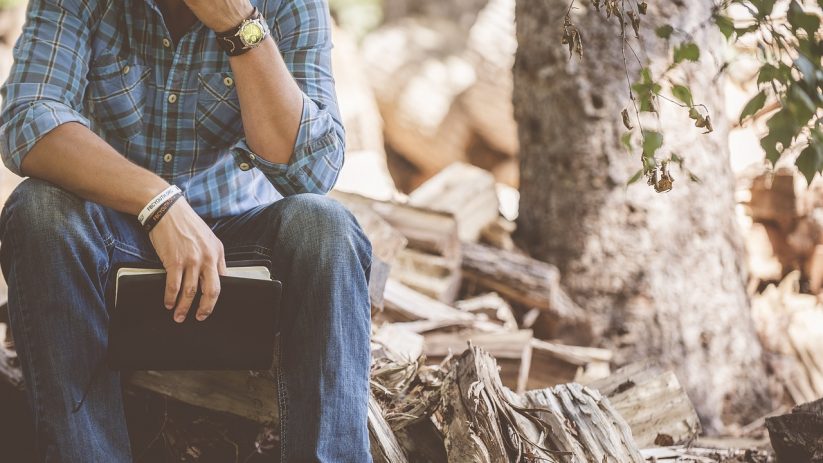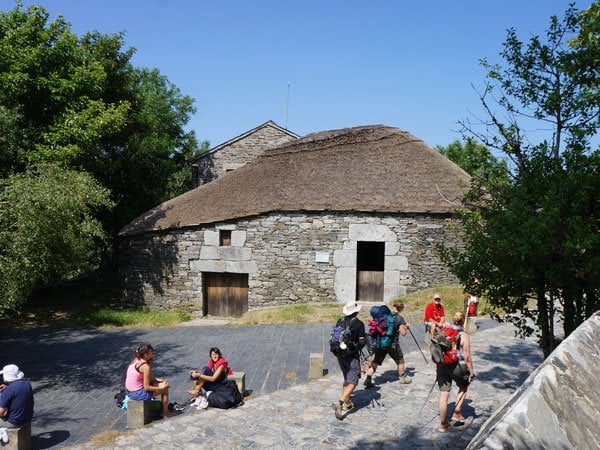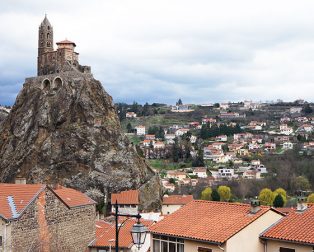“If you’re curious about what it’s like for a not very athletic and not at all religious family to go on a long-distance adventure, I think Onward, Backward! will give you a relatively accurate picture of one lucky family’s experience.” Bennett Voyles, Author, Onward, Backward!
A few years ago, Bennett Voyles, an American ex-pat writer living in France, took his family—his wife and three kids—on the adventure of a lifetime.
They walked and cycled over 1500 km to Santiago de Compostela as a family.
In this delightful new book about family on the Camino, the author combines a family memoir with rich Camino history to give a new perspective.

A book about Family on the Camino: Q&A with Bennett Voyles
We interviewed Bennett about writing the book and his experience of the Camino. Enjoy this Q&A with Bennett Voyles, author of Onward, Backward! -or- A Ramble to Santiago:
1. Why the Camino? What was the urge to do it as a family, do you think?
I guess the three biggest reasons were that my wife and I had always liked walking and that we were both very interested in history, art, and architecture.
Finally, as our three daughters were all teenagers and growing up very quickly, Cybèle and I were looking for an adventure that we thought might make an impression on them and give us all a sense of confidence that you can accomplish something big if you put your mind to it.

2. What are some of your favourite memories from your trip?
At this point, I have two kinds of memories – first, from the actual trek, and then from my research about the towns we went through when I started working on Onward, Backward!
As far as the actual Camino goes, the most memorable parts were the extremes – the funniest things that happened and the most difficult moments. Often, those categories overlapped, particularly as you look back on them. The second set of memories is the things I’ve learned since I began the research for the book, particularly about the deliberate way the Church went about inventing and marketing the Camino in the 10th and 11th centuries.

We treat the Camino as a sombre spiritual path, and it was, but it was also a kind of medieval Route 66. First, the monks built up the Saint James cult, and then they organized a whole string of monasteries that stretched across Spain and France, complete with plenty of roadside attractions (mostly saints’ relics) that monks would conjure up or steal from other churches.
3. What tips and advice do you have for our audience who are interested in taking their young families on the Camino?
Our girls weren’t young, but in Spain, we saw a fair number of Spanish families with little kids. The ones who were having the best time tended to be part of larger packs—two or three families with kids roughly the same age. Having kids to talk to and play with as they walk would be helpful.

I would also make sure nobody’s pack is cumbersome. Cybèle was adamant that our girls took no more than 4-5 kg, and our packs were not very heavy either. I remember reading somewhere that the Bedouin in the Sahara said anything not essential would kill you, which is more or less true of the Camino.
You should also try to do some historical reading ahead of time if you can, and maybe find stories about each stop you think your kids would find interesting. I have several good ones in my book, but plenty I couldn’t fit in.
There is a lot of shocking history on the Camino that will be mostly lost on you if you don’t look it up beforehand — I know we missed a lot at the time. And not just history: it would probably also be an excellent opportunity for birdwatching or plant identification if you are interested in that. I don’t know anything about either subject, but I have read that there are some flowers in the countryside just out of Le Puy-en-Velay that are found nowhere else in the world, and I’m sure there are all kinds of amazing things we walked right past without ever even seeing.
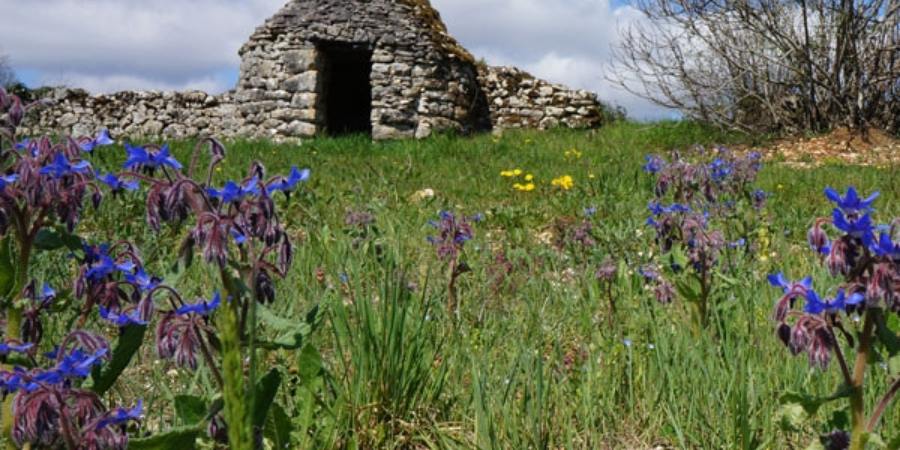
4. How did this trip impact you (positively/negatively) as a family?
I think it affected us in different ways.
Cybèle and I became long-distance walking addicts and have since undertaken several other long-distance adventures. Our latest was a walk from Berlin to Rome we made two years ago, which I’m starting to write about now.
Our girls, our oldest and youngest, like to hike. Our middle daughter Charlotte was a history major and studied Arabic, interests I think the Camino may have helped encourage. Our youngest, Thea, is studying medieval art history at university.
The experience also gave us more appreciation for very simple things. Our oldest, Masha, likes to say that all she really needs to be happy is food, a book, and a bed.
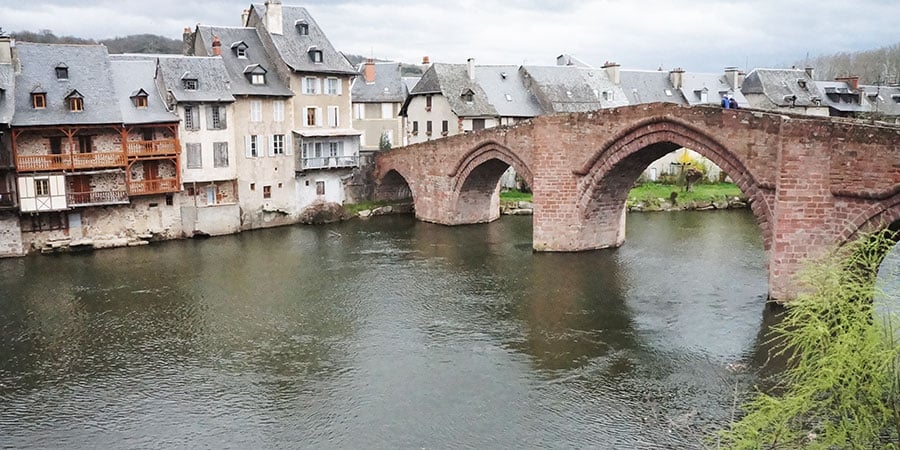
5. In your own words, why would our audience enjoy your book?
First, if you’re curious about what it’s like for a not-very-athletic and not-at-all-religious family to go on a long-distance adventure, I think Onward, Backward! Will give you a relatively accurate picture of one lucky family’s experience.
Second, I spent much more time researching this book than most Camino writers, even guidebooks. If you want to learn what really happened along the Way—and how the Way came to be in the first place—my book is one of the few that actually tries to explain it.
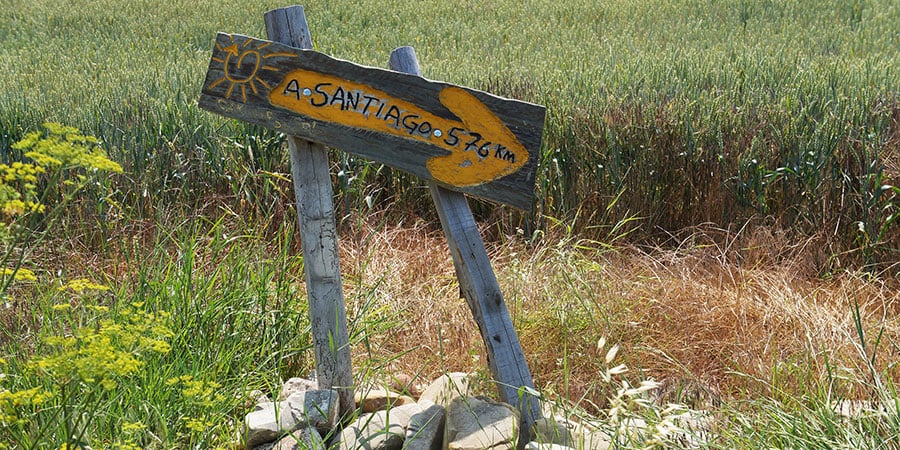
If you want to read more or purchase Bennett’s book on Amazon, click here.
If you would like to talk to us about bringing your Family on the Camino, we have our brand new Camino for Families packages, which you should check out! Let us know if you have any questions by contacting us on the form below:

